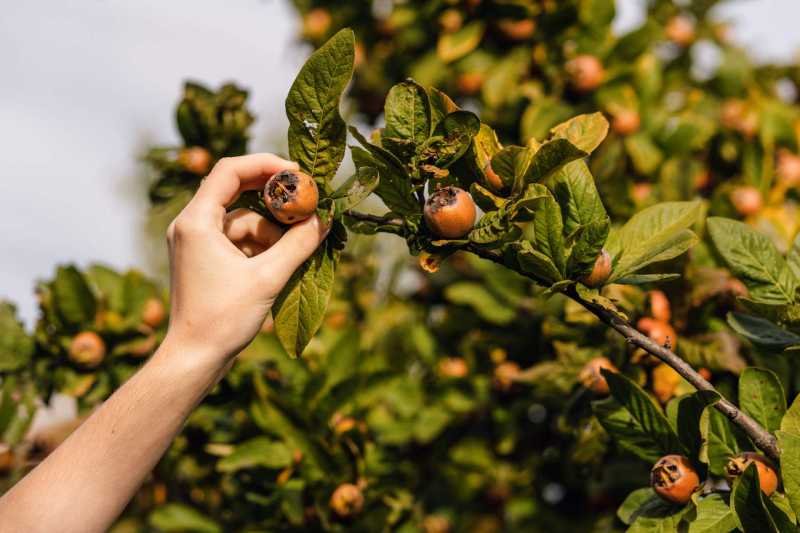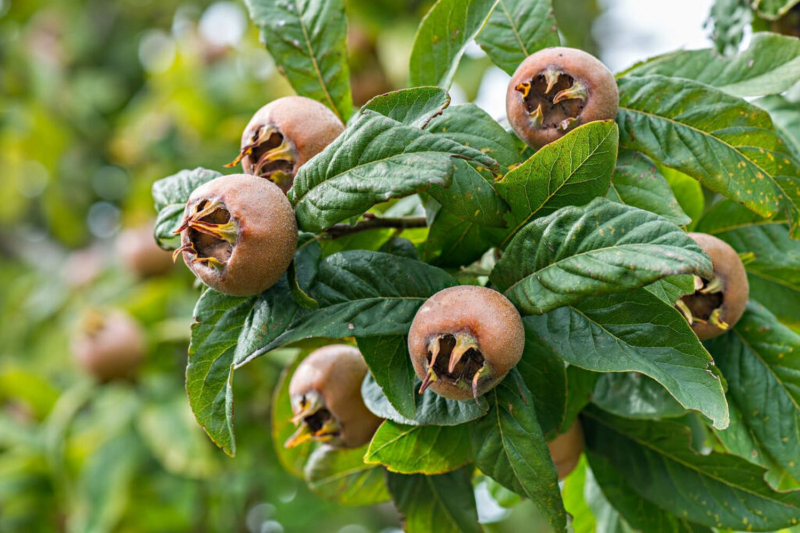Medlar
Mespilus germanica, known as the medlar or common medlar, is a large shrub or small tree in the rose family Rosaceae. The tree is native to the area surrounding modern-day Iran and was introduced to Western Europe by the Romans. It used to be widely eaten in Britain through the 19th century but fell out of favor when more appealing fruit and sugary sweets came into popularity. Under ideal circumstances, the deciduous plant grows up to 8 meters (26 feet) tall. Generally, it is shorter and more shrub-like than tree-like. With a lifespan of 30–60 years, the tree is rather short-lived. Its bark is grayish brown with deep vertical cracks forming rectangular plates that tend to lift off.
Medlars are picked in November, ideally after a period of frost that helps the fruit mature more fully. In order to keep them cold and dark during the subsequent bletting process, they should be placed in vented wooden boxes lined with straw or paper. The bottom end can simply be placed face down on a plate and covered. It takes some time to blet, but as the fruits begin to turn a wrinkled brown and get fermented, you know you're on the right track. When removing the pulp from a very ripe medlar, proceed with caution because it will rupture at the slightest touch. Gently remove the stalk by grasping the crown and pulling the flesh out.












